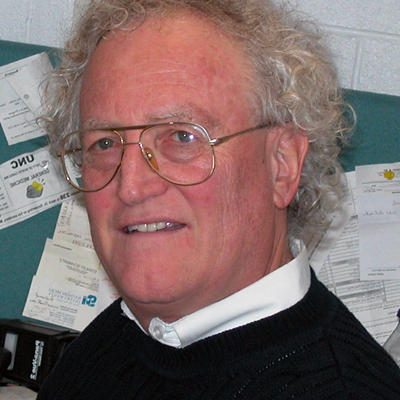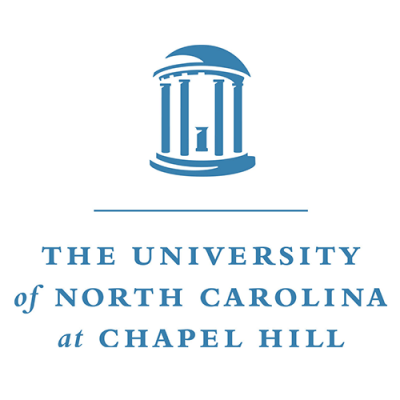How basic cell biology research can yield applications in creating and preserving vaccines
Each year, nearly 1/2 billion people suffer from dengue infections, and there is currently no effective vaccine or drug therapy available [1]. This mosquito-borne virus causing flu-like illness, which can be fatal, is a serious threat to many in tropical and sub-tropical countries even now touching southern Florida and Texas. Vaccines must immunize against all five viral serotypes to be effective making them challenging to develop. Dr. Ken Jacobson, Kenan Distinguished Professor of Cell Biology and Physiology at the University of North Carolina at Chapel Hill, studies basic cell biology and membrane biophysics to investigate the attachment of dengue virus to the cell membrane and the subsequent steps of dengue virus infection. Dr. Jacobson not only conducts basic science research that may help lead to a dengue virus vaccine, but also merges physics with biology to develop a solar powered thermoelectric vaccine cooler to preserve vaccines, including those developed for dengue virus. This will permit more effective delivery of vaccines in the rural developing world.
Breaking new ground in scientific discovery and technique development, Dr. Jacobson was one of the early developers of digitized fluorescence microscopy who introduced its applications to cell biology. Probing cell biology from a physical perspective, Dr. Jacobson created these tools to measure the traction forces the cell must apply to crawl on a surface, and to “photomanipulate” the proteins involved in cell migration using laser beams. Currently, Dr. Jacobson works with theoreticians to further understand morphologically oscillating cells as a model for amoeboid cell migration important in cancer metastasis. A significant contributor to what is now termed the “Renaissance of Light Microscopy,” Dr. Jacobson continues to leverage high-resolution imaging techniques both in the study of dengue virus infection -- for further breakthroughs in vaccine development -- and to understand the mechanisms of amoeboid cell movement.
Current research includes:
-
Dengue Virus Infection, Vaccine Development and Delivery: Collaborating with a prominent dengue researcher and a well-known biophysical chemist at UNC, Dr. Jacobson is studying very tiny protein clusters on the cell membrane termed nanoclusters or nanodomains, that are important receptors on dendritic cells for multiple pathogens, particularly the dengue virus. Using fluorescence microscopy to examine the clusters on the scale of 100 nanometers or less, Dr. Jacobson and his team investigate how dengue virus bound to the cell surface receptors moves laterally to sites of internalization and then how receptors traffic the virus to finally produce infection. Ultimately, Dr. Jacobson hopes to identify where in the process antibodies that block dengue infection act. This basic research is important in the development of a successful dengue vaccine.
In the rural developing world, expensive vaccines are degraded due to overheating or freezing in outmoded ice chests, resulting in a loss of confidence in treating the populations because the vaccines administered are impotent. Therefore, and complementing his basic research, Dr. Jacobson has been also interested in more effective delivery of vaccines in the rural developing world. He and his group are developing a solar powered thermoelectric vaccine cooler in which vaccines are kept at the proper temperature in portable coolers run on batteries charged by on-board solar panels. This work is done by undergraduate students, through UNC programs designed to inspire undergraduate students considering research as their career.
-
Cell Motility: Dr. Jacobson’s second biomedical research interest involves the question of how cells move. In particular, his group is studying cells whose shape oscillates in a periodic fashion, termed the periodically protruding phenotype. This is a basic research project and provides a test bed for needed new theoretical approaches to modeling motile phenomena. It is important that the periodically protruding phenotype is likely a model for a key type of amoeboid migration that is significant in development and to the spread of metastatic cancer.
Bio
Dr. Kenneth Jacobson is a Kenan Distinguished Professor in the Department of Cell Biology and Physiology at University of North Carolina at Chapel Hill. He has been elected Chair of the Membrane Structure and Assembly Subgroup of the Biophysical Society for 2004, and appointed Chair of the 2004 Biophysical Discussions in Asilomar on “Probing Membrane Microdomains” as well as leading a number of earlier meetings. His research interests include fundamental microstructure of cell membranes, experimental and theoretical studies of cell migration, and the development of thermal electrically cooled vaccine carriers for the rural developing world.
Growing up, Dr. Jacobson considered many fields including architecture, nuclear engineering, radio journalism, and patent law. However, he always gravitated towards basic research, and in college, at the University of Wisconsin-Madison, he had an opportunity to work with the inventor of the betatron, who was studying plasma physics to generate power from thermonuclear fusion. Working in this lab was an influential experience that eventually thrust him into the industry, to work on silicon carbide as a semiconductor material. Between undergraduate work and the industrial R&D experience, Dr. Jacobson worked on virus structure, obtaining his Masters Degree in Physics from the University of Wisconsin. At that time, biology and biophysics was just blossoming, and Dr. Jacobson switched gears after industry to go back to school and pursue a Ph.D. in Biophysical Sciences from the University of Buffalo. After, he worked at Roswell Park Memorial Institute - the New York State Cancer Research Hospital, focusing on cancer cell biology. When he came to University of North Carolina in 1980, almost in the same year as “when Michael Jordan came to star at the University,” he began to further zoom in on cell membrane dynamics and cell migration, and developed tools that would help advance cell biology. This work has continued throughout his time in North Carolina.
Dr. Jacobson has also developed an interest in academic science policy and envisions a future where stabilized funding in the US will rid academic scientists of the extreme peaks and valleys in funding they go through during their careers. He also would like to see the growing administrative burden on investigators reduced so they can spend more time on the research activities the tax payers intended.
Aside from research, Dr. Jacobson has a family of a wife, three grown daughters, and three dogs, and enjoys golf and sailing.
For more information, visit http://jacobsonlab.unc.edu
In the News
American Society for Cell Biology Newsletter March 2010. pp19-20.
Publications
Videos
Awards
Distinguished Biomedical Alumnus, 2013
School of Medicine and Biomedical Sciences, University of Buffalo
Gregorio Weber Award for Excellence in Fluorescence Theory and Application, 2011
Elected as a Fellow of the American Association for the Advancement of Science (AAAS), 2008
Kenan Distinguished Professor of Cell and Developmental Biology, 2005
Suddath Memorial Symposium Lecture on Structural Biology, 1994
Georgia Institute of Technology
Doctor of Medicine honoris causa from Faculty of Health Sciences, 1993
Linköping University, Linköping, Sweden


